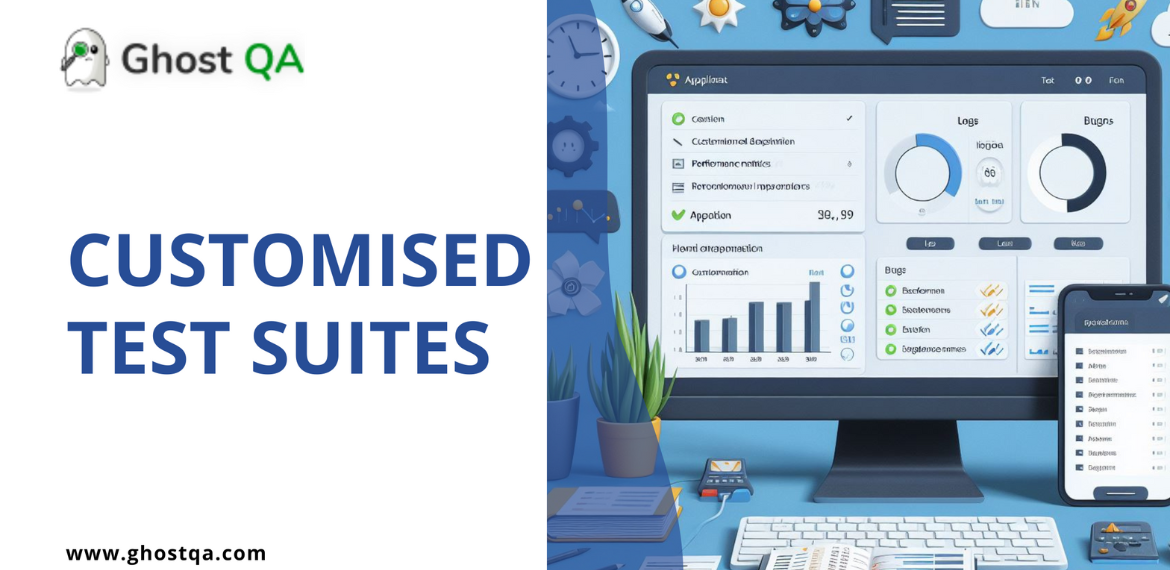Delivering error-free products is essential in the fast-paced world of software
development. Customized test suites stand out as a major method that helps to
streamline testing operations through test automation management. Personalized to project requirements, they provide complete inspection and verification, boosting precision and dependability. Tailored test suites are an essential tool for quality assurance since they provide optimal functionality and performance standards.
Understanding Test Automation Management
Definition of Test Automation
Test automation is the process of controlling test execution and comparing expected and actual results using specialized software that is not part of the product being tested.
In essence, it automates repetitive yet essential tasks within an established testing
process or conducts additional testing that would be challenging to execute manually.
Test automation is crucial in continuous development and deployment environments, where it ensures that new or modified software can be comprehensively and consistently tested to meet quality standards.
Role of Test Automation Management in Software Testing
Test automation management is the strategic orchestration of automated testing
activities across the software development lifecycle. It involves meticulously planning, implementing, and overseeing various aspects of automated testing, including tool selection, script development, test suite organization, and result analysis.
The primary goal is to ensure that the automated testing strategy is aligned with project objectives and delivers timely, reliable feedback on the quality and performance of the software product. By effectively managing test automation, organizations can streamline their testing processes, enhance software quality, expedite time to market, and reduce costs associated with manual testing efforts.
Additionally, test automation management fosters a culture of continuous improvement by facilitating the identification and resolution of defects early in the development cycle.
This proactive approach not only improves overall product quality but also enhances customer satisfaction by delivering software products that meet or exceed expectations.
Benefits of Using Customized Test Suites in Test
Automation Management
Using customized test suites in test automation management brings several benefits, including:
Inbuilt Suite Historical Execution Data:
Custom test suites allow organizations to capture historical execution data of their test suites, providing insights into test performance and identifying trends over time.
Creation of Custom Test Suites:
With custom test suites, teams can tailor their test cases to specific requirements,
grouping related tests together to create cohesive test suites aligned with project
objectives.
Execution of Custom Test Suites:
Custom test suites enable the execution of targeted testing scenarios, focusing on
critical areas of the application and optimizing test coverage based on project priorities.
Historical Execution Dashboard for Custom Test Suites Execution:
Organizations can leverage custom test suites to generate historical execution
dashboards, offering visibility into test execution trends, pass rates, and failure patterns for informed decision-making.
Graph Representation of the Test Suites to Show Automation Health:
Graphical representations of custom test suites provide visual insights into the
automation health of the application, highlighting areas of strength and potential
improvement in the test coverage.
Execution Reports Delivery via Mail to Different Users:
Custom test suites facilitate the automated generation and delivery of execution reports via email to relevant stakeholders, ensuring timely dissemination of test results and actionable insights.
Steps to create customized test suites
The creation of customized test suites involves several critical steps:
- Identify the objectives of testing: Begin by defining what you want to achieve with your testing process. This could include identifying critical functionalities, performance benchmarks, and security standards your software must meet.
- Analyze your application: Understand the architecture of your software,
including its modules, functionalities, and integration points. - Design test cases: Based on your objectives and application analysis, design
detailed test cases that cover all aspects of your software. Include both positive and negative scenarios to ensure comprehensive testing. - Select testing tools: Choose automation tools that best fit your testing needs. Consider factors such as language support, integration capabilities, and the learning curve.
- Organize test cases into suites: Group your test cases logically to form test
suites. You might organize them based on functionality, module, user scenario, or any other criteria that make sense for your project. - Execute and refine: Run your test suites and analyze the results. Use this
feedback to refine your tests continuously.
Best practices for maintaining and updating customized test suites
Maintaining and updating customized test suites is crucial for ensuring efficient and effective testing processes. Here are some best practices to consider:
- Regularly Review Test Cases: Schedule periodic reviews of your test cases to ensure they remain relevant and aligned with evolving requirements. Remove outdated or redundant cases and update existing ones to reflect any changes in the software.
- Automate When Possible: Identify opportunities to automate test cases where feasible. Automation reduces manual effort, increases testing speed, and enhances overall efficiency. Prioritize test cases with high frequency or critical functionality for automation.
- Keep Documentation Updated: Maintain comprehensive documentation for your test suites, including test case descriptions, expected outcomes, and any dependencies. Ensure that documentation is updated regularly to reflect changes in the software and testing procedures.
- Incorporate Feedback: Encourage collaboration and feedback from team
members involved in testing. Gather insights from testers, developers, and
stakeholders to identify areas for improvement and refinement in your test suites. Incorporate feedback to enhance the effectiveness and accuracy of your testing processes.
By following these best practices, you can ensure that your customized test suites
remain relevant, efficient, and effective in supporting your software testing efforts.
Conclusion
Custom test suites are integral to efficient test automation management, enabling early error detection and seamless integration with development processes. By aligning tests with specific product requirements, they expedite the identification and resolution of flaws, conserving time and resources. Integration into CI/CD pipelines further expedites software delivery, underscoring a dedication to quality and adaptability in the ever-evolving technology landscape. Regular review of test cases ensures relevance and effectiveness, while automation maximizes efficiency where possible. Keeping documentation updated and incorporating feedback from stakeholders ensures the continued relevance and effectiveness of custom test suites, ultimately contributing toenhanced software quality and accelerated development cycles.

